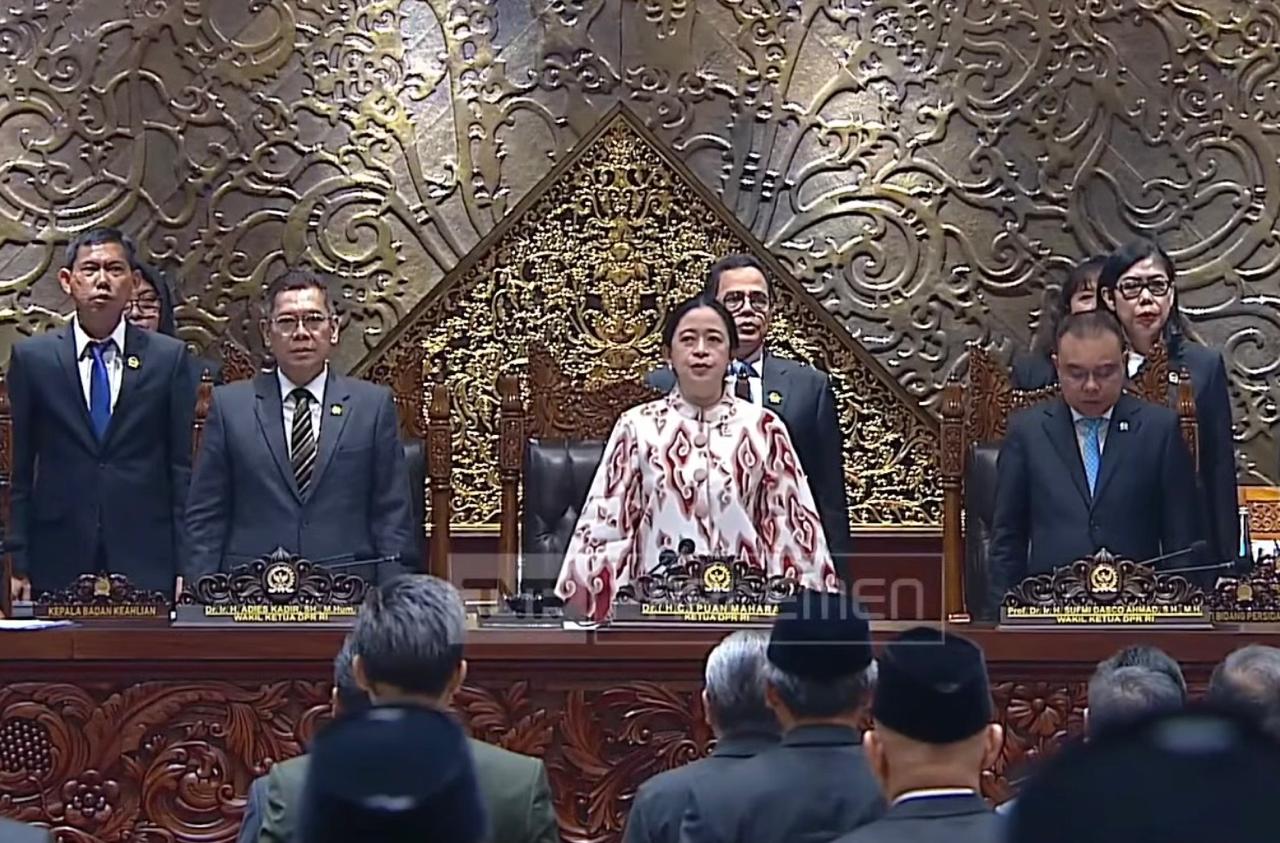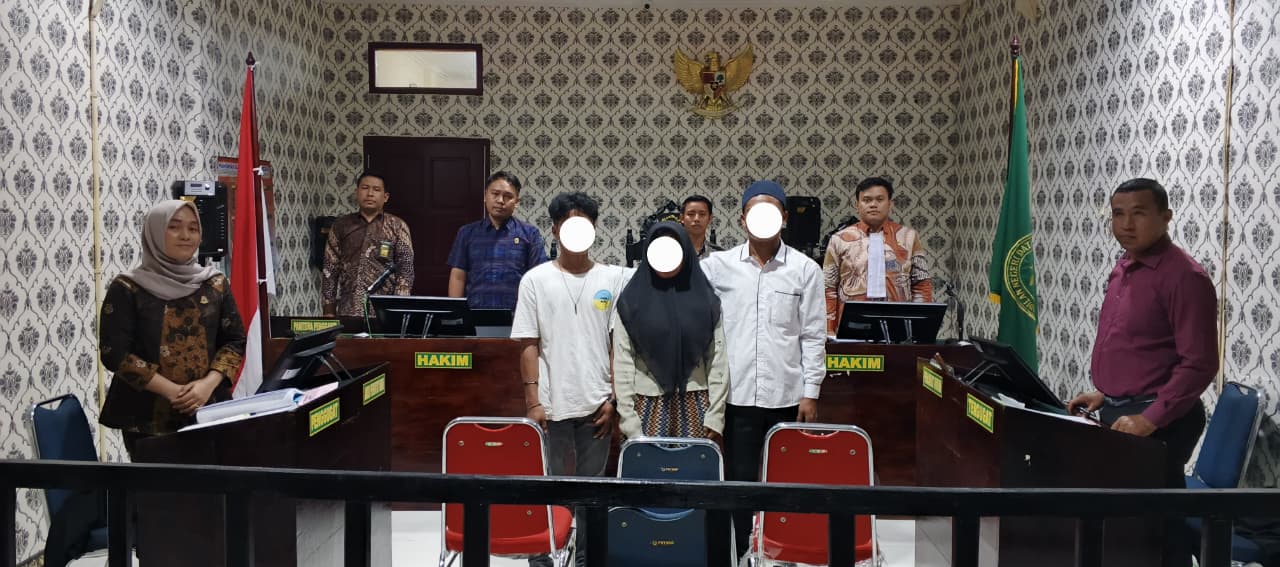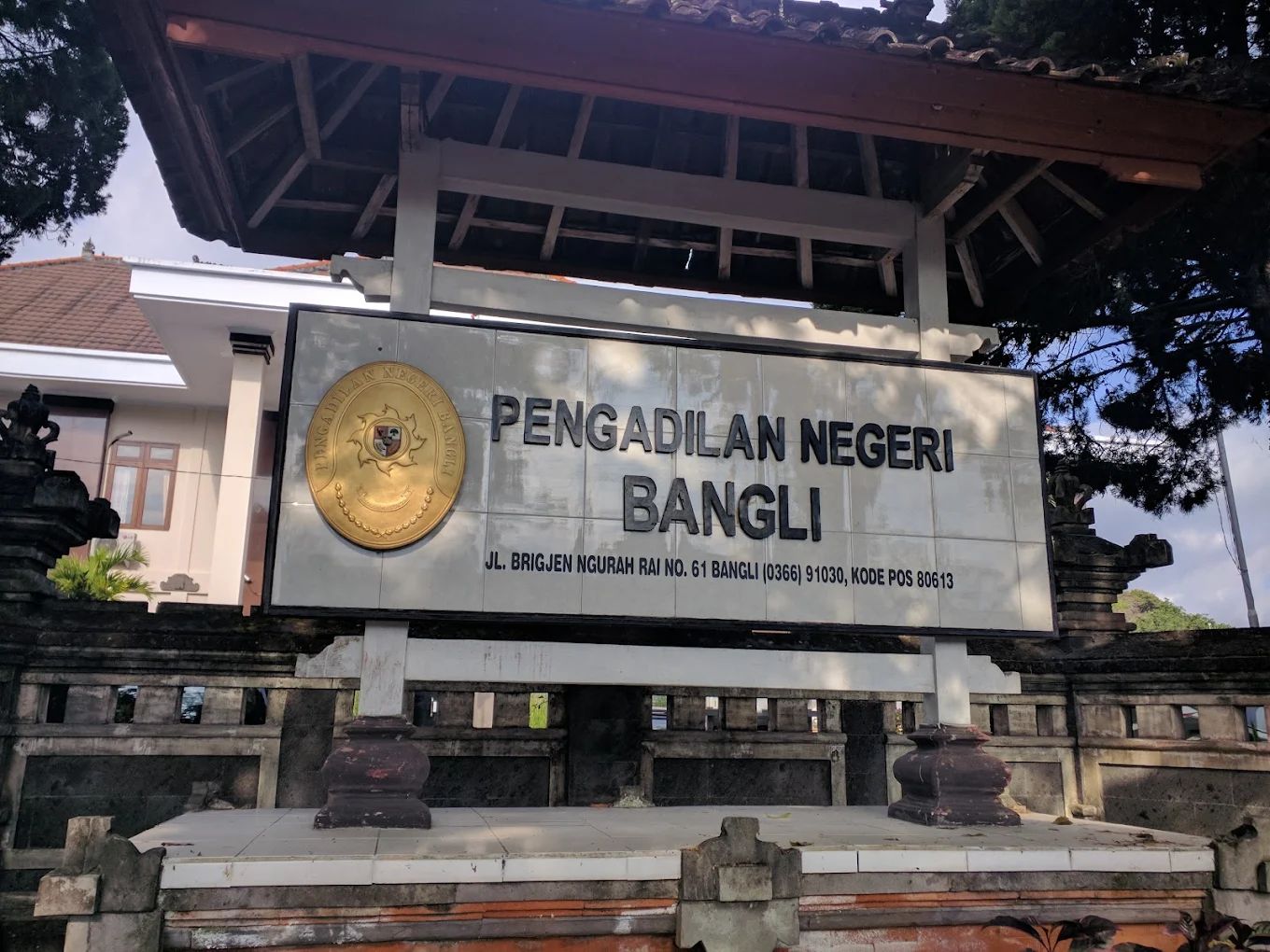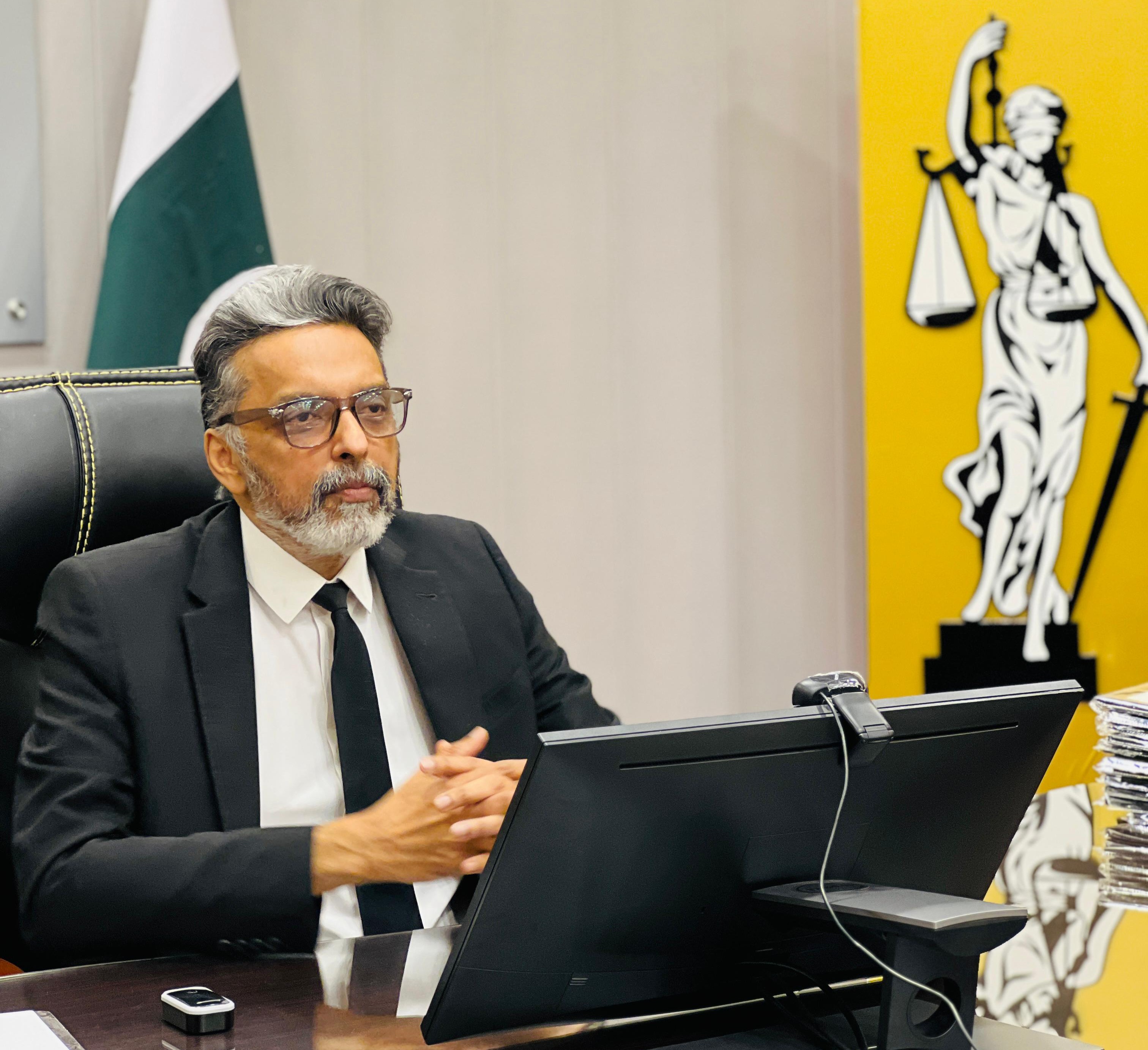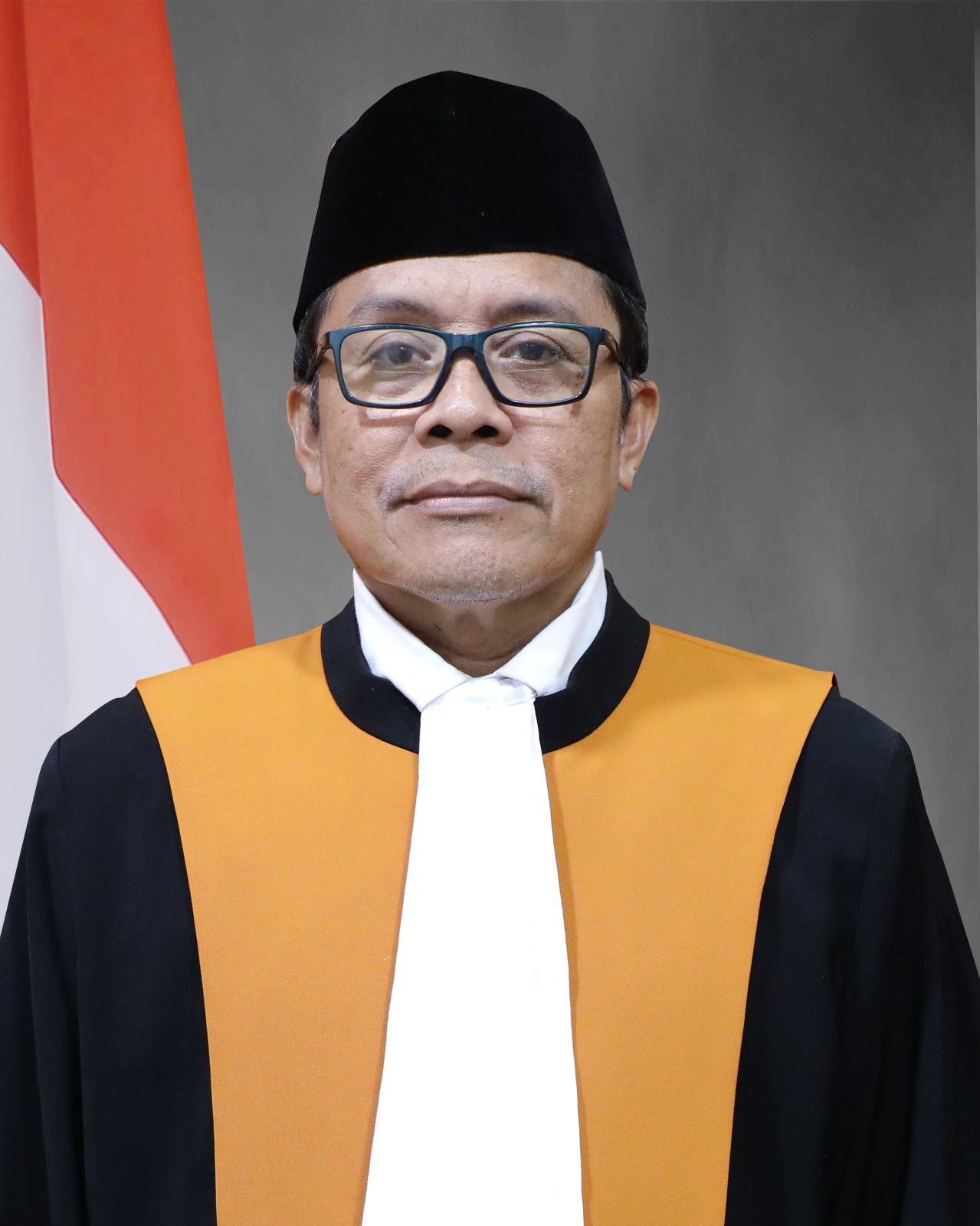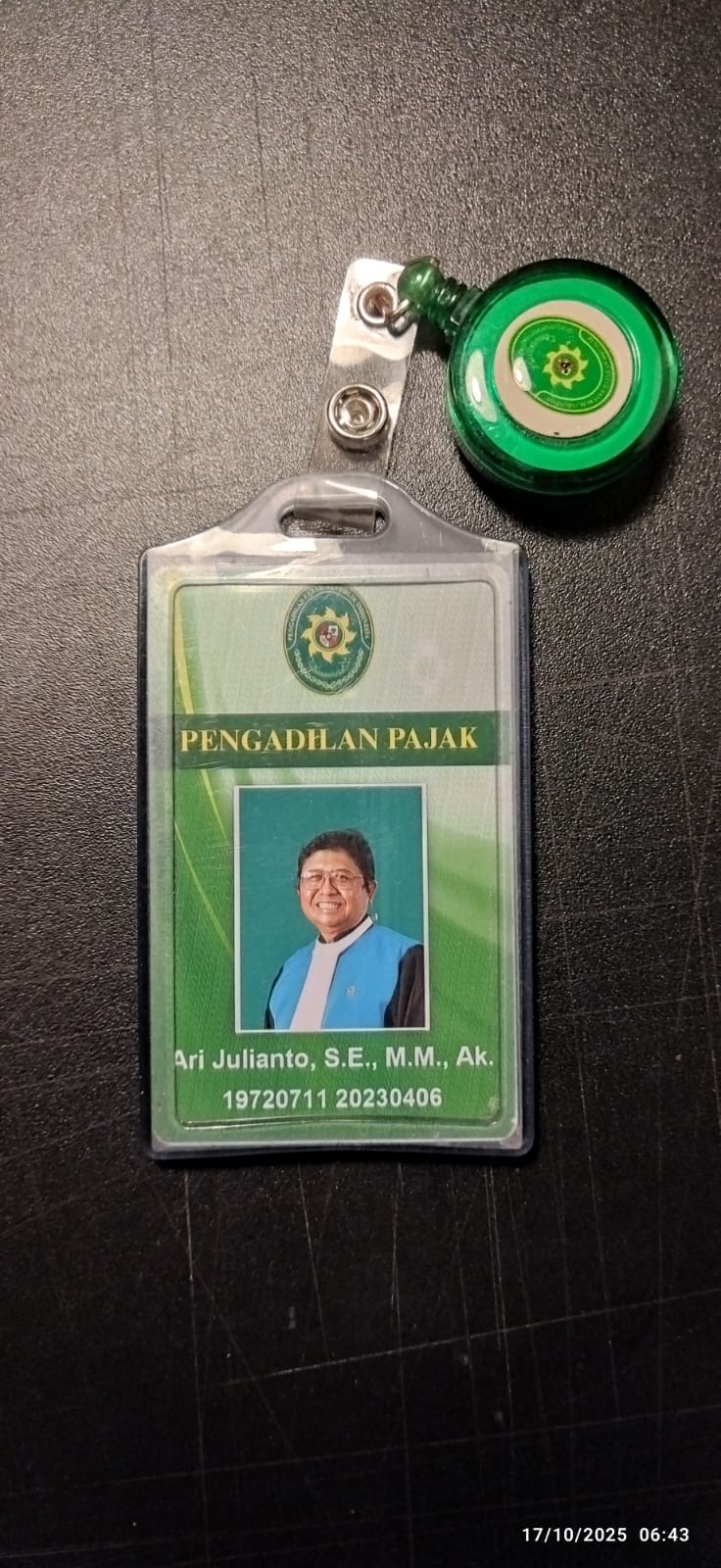SHAZIB Saeed, adalah seorang Hakim Distrik dan Sidang Pakistan, yang saat ini bertugas di Bahawalnagar. Beliau memiliki pengalaman akademis dan profesional yang luas. Di antaranya sebagai Staf pengajar tamu di Akademi Yudisial Punjab, Kolese Hukum Kinnaird, dan Kolese Hukum Quaid-e-Azam, Instruktur Senior, Direktur Riset, dan Direktur Administrasi di Akademi Yudisial Punjab.
Selain itu, Shazib Saeed merupakan Ketua Pengadilan Lingkungan Punjab, dan menjadi Anggota Komite Penasihat Pengadilan Tinggi Yang Terhormat untuk Kehakiman Distrik. Beliau juga berkontribusi dalam membuat Kompilasi penilaian yang dilaporkan dan tidak dilaporkan dari Pengadilan Lingkungan Punjab yang kemudian diterbitkan sebagai "Keputusan Pengadilan Lingkungan Punjab".
Shazib Saeed adalah penulis berbagai penilaian yang dilaporkan di bidang hukum lingkungan sehingga banyak berkontribusi pada pengembangan yurisprudensi lingkungan di Pakistan. Keahlian dan komitmen Shazib Saeed terhadap hukum lingkungan telah memberikan dampak yang signifikan terhadap lanskap peradilan Pakistan.
Baca Juga: Konsensus Epistemik Hakim: Fondasi Baru Keadilan Iklim di Indonesia
Pada artikel ini, Shazib Saeed akan memaparkan isu krusial tentang Perubahan Iklim dan Hukum, Perkembangan Yurisprudensi dalam Kerangka Lingkungan Pakistan (Climate Change and the Law, Jurisprudential Developments in Pakistan's Environmental Framework). Berikut artikel lengkapnya:

Shazib Saeed (Hakim Distrik Bahawalnagar, Pakistan)
It is said Environment is no one’s property but everyone’s responsibility Pakistan is a country which is “more sinned against than sinning” on environmental issue. Since it contributes less than 01 percent in global carbon emission but stands amongst the vulnerable countries. Climate change has become a unique human rights issue of epic proportion for Pakistan. Recent floods are harbinger of Goliath lurking to strike. It is no exaggeration to say that right to life is blatantly threatened by menace of climate emergency which is catastrophic. It is ensnaring death trap for human civilization.
The environmental hazards posed to the region due to rapid industrialization, urbanization, and agricultural development has led to common problems such as pollution of rivers; a rise in industrial waste and vehicle emissions; handling, storage, and transportation of dangerous goods; contamination of water, land, and coastal resources; air pollution; waterlogging; increase in the use of agrochemicals; and deforestation. All these threats to the environment call for an integrated approach.
Word environment is not mentioned in our constitution however article 9 of the Constitution dealing with a fundamental rights provides that no person shall be deprived of life or liberty save in accordance with law. The word `life' has been interpreted in the case reported as Ms. Shehla Zia v. WAPDA (PLD 1994 SC 693) as under: "The word `life' in the Constitution has not been used in a limited manner. A wide meaning should be given to enable a man not only to sustain life but to enjoy it."
However, it is now an internationally recognized principle that if there is conflict between a personal right and environment, the personal right must yield in favour of environment (1993 SCMR 1451).
Judicial Activism in Developing Environmental Jurisprudence
The most significant feature in the environmental landscape of Pakistan is the judicial activism that has responded to public interest environmental litigation. The superior courts have been liberally responsive to environmental issues and complaints, including on the jurisdictional issue of locus standi, the main body of environmental jurisprudence in Pakistan has been laid down by the Supreme Court and the High Courts.
Landmark Green Precedents
In the landmark decision in Shehla Zia vs. WAPDA,[PLD 1994 Supreme Court 693] the Supreme Court of Pakistan held that the right to a clean and healthy environment was part of the Fundamental Right to life guaranteed by Article 9 of the Constitution and the Fundamental Right to dignity provided in Article 14. In this case, the Supreme Court also introduced the precautionary principle of environmental law, with specific reference to its inclusion in the Rio Declaration on Environment and Development, into Pakistani jurisprudence.
In the Khewra Mines Case [1994 SCMR 2061] petitioners sought enforcement of the right of the residents to have clean and unpolluted water against coal mining activities in an upstream area. The Supreme Court affirmed its expansive approach to Article 184(3) and stated that 'the right to have unpolluted water is the right of every person wherever he lives.
In dealing with noise pollution, the Supreme Court in Islamudin Case, [PLD 2004 SC 633) restrained the defendants from creating public nuisance in their workshops, stating that even noise made in carrying on a lawful trade, if injurious to the comfort of the community, is a public nuisance.
The Supreme Court took suo moto action [Suo Motu case No. 13 of 2005, Report 2005-2006, SC of Pakistan, Golden Jubilee Edition, 106] in Islamabad Chalets and Pir Sohawa Valley Villas, restraining the construction of chalets and villas situated at a distance of two kilometers of the Margalla Hills, where the housing scheme was launched. The housing scheme in question would have had a direct bearing on the eco-system of the Margalla Hills.
The Supreme Court also took suo moto action in the New Murree Project case [2010 SCMR 361] which posed grave environmental hazard as its initiation would have destroyed 5,000 acres of forest. The project was ultimately disbanded and the court reiterated the global environmental law principles of intergenerational equity as well as sustainable development in order to achieve goal of healthy environment, not only for present population but also for future generations.
In the IMAX Cinema Case [2006 SCMR 1202] the Supreme Court opined that conversion of a public park into a shopping mall and setting up of the IMAX cinema without observing the codal formalities of the legal framework in particular non filing of the initial environmental examination was grossly illegal and was an offence under the Act.
In the Canal Road Expansion Case [2011 SCMR 1743] the question before the Supreme Court was the environmental impact of widening the 14 km road along the banks of the canal that runs through Lahore. It was contended that not merely would the scheme devastate the green belt along both sides of the canal, but would even fail to achieve its stated objective of improving traffic flow in order to reduce traffic congestion in the city. The Court while holding that green belt around both sides of the canal was a public trust resource and hence could not be converted into private or any other use also observed that widening of the road was in fact a public purpose and as minimum area was being affected and project conformed with the Act thus the Doctrine of Public Trust, in circumstances, could not be said to have been compromised. Courts have recognized that there can be multiple stresses on the environment and there is sometimes a dynamic tension involved, which may mean that it may not be possible to redress one without to a certain extent leaving others unaddressed.
The aim is not necessarily a perfect environment but a balanced one and the above referred judgment show that in such cases, the judicial approach has been appropriately nuanced. Later on in [2015 SCMR 1520], Supreme Court again examined the case to ensure that no direction of the court were being violated.
In Land mark judgement Imrana Tiwana Case [P L D 2015 Lahore 522] full bench of the High Court raised concern about the legality of the environmental process adopted to review the EIA filed by the LDA in the light of Article 140A of the Constitution. It was observed that it the time to move on Environment and its protection has come to take center stage in the scheme of constitutional rights. It was held that EIA is nature’s first man made check post, nothing adverse to the environment is allowed to pass through it. It is through the tool of EIA that the authority gets to regulate and protect the environment and as a result the life, health, dignity and well-being of the people who inhabit the environment.
In a recent case of C.P.L.A/2022; The Monal Group of Companies, Islamabad v. Capital Development Authority, the Supreme Court of Pakistan made significant observations regarding environmental protection. The court emphasized that the establishment and operation of restaurants within the Margalla Hills Park violate the Islamabad Wildlife (Protection, Preservation, Conservation and Management) Ordinance 1979. These observations reflect the judiciary’s commitment to upholding environmental laws and ensuring that development does not come at the cost of ecological integrity.
The above referred precedents reinforce the fact that that the Courts have taken a broad and expansive view of their jurisdiction in relation to environmental issues.
The road ahead for environmental Justice
1. Judges and the judiciary at all levels need to be sensitized to environmental issues. Resolution of environmental issues is an integral aspect of delivering social justice which judiciary needs to keep in mind.
2. To effectively address environmental issues within the framework of environmental law, judges must adopt an innovative and adaptable approach. The existence of a single Environmental Tribunal for the Province of Punjab is insufficient to tackle the extensive problem of climate degradation. A dynamic and multi-tiered approach is urgently needed. One crucial step is to amend existing legislation to empower District and Sessions Judges in the field across Punjab to handle environmental appeals and complaints within their respective districts. This decentralization will facilitate more localized and immediate responses to environmental concerns, addressing problems at the grass-root level. In addition, judges should receive specialized training in environmental law through Punjab Judicial academy. Their approach to handling environmental cases should be flexible and open-minded.
3. The current system may not be providing sufficient deterrence to prevent environmental violations. One significant problem with the current environmental tribunal and environmental magistrates is that it may lack effective deterrence. If fines on the basis of plea of guilt are too low or penalties are not stringent, they may not effectively discourage individuals or companies from violating environmental regulations. The practice of imposing nominal fines, especially when coupled with plea deals, can undermine the seriousness of environmental offenses. When fines are minimal, they may be viewed merely as a cost of doing business rather than a genuine consequence of unlawful actions. Tribunal is empowered by the legislature to impose substantial fines and penalties, even sentence of imprisonment in case of previous conviction that reflect the severity of the environmental harm caused. Instead of allowing offenders to settle for minor penalties, the tribunal could adopt a more rigorous approach to ensure that penalties are commensurate with the harm done.
4. Proper enforcement mechanisms and increasing monitoring can help ensure that violations are detected and addressed more effectively. This might include more frequent inspections, better data collection, and improved reporting systems to track compliance and the effectiveness of penalties. As suggested earlier this can be conveniently done by the District and Sessions Judges working in the field if they are empowered through legislation
5. Raising public awareness where remedy lies and the consequences of environmental violations can also help foster a culture of compliance. Public at large is not aware where the remedy lies in case of any environmental violation and they choose wrong forum, got exhausted and discouraged Educating stakeholders about the importance of adhering to environmental regulations and the potential consequences of non-compliance can contribute to better environmental practices. Legislative changes may be necessary to provide the tribunal with broader powers and more robust mechanisms for enforcement. This could involve updating laws to ensure that penalties are adequate and that the tribunal and the environmental magistrates have the authority to address violations effectively.
6. All judicial academies need to develop curriculum for environmental law training. The concept of pre‐trial negotiations may be introduced in the proceedings before the Tribunals to enable the polluter to come up with, if possible, a mechanism for resolving the acts complained against, thus eliminating the environmental violation.
Epilog
Berdasarkan penjelasan di atas, pokok pikiran Shazib Saeed menekankan bahwa untuk penanganan masalah lingkungan hidup khususnya tentang perubahan iklim maka:
1. Hakim dan lembaga peradilan di semua tingkatan perlu peka terhadap isu-isu lingkungan hidup karena penyelesaian permasalahan lingkungan hidup merupakan aspek integral dalam mewujudkan keadilan sosial yang perlu diperhatikan oleh peradilan.
2. Untuk mengatasi permasalahan lingkungan hidup secara efektif, hakim harus menggunakan pendekatan yang inovatif dan mudah beradaptasi.
3. Pengadilan diberi wewenang oleh badan legislatif untuk menjatuhkan denda dan hukuman yang besar bahkan pidana penjara, sebagai bentuk pendekatan yang lebih ketat untuk memastikan hukuman pelaku kerusakan lingkungan sepadan dengan kerugian yang ditimbulkan.
4. Peningkatan kepatuhan masyarakat untuk cinta lingkungan hendaknya dipicu oleh kesadaran masyarakat tentang konsekuensi pelanggaran hukum lingkungan hidup.
5. Mekanisme penegakan hukum yang tepat dan peningkatan pemantauan dapat membantu memastikan bahwa pelanggaran terdeteksi dan ditangani dengan lebih efektif.
6. Semua akademis peradilan perlu mengembangkan kurikulum untuk pelatihan hukum lingkungan hidup. (MCNB/LDR).
Baca Juga: Success Story, Gender Based Violence Courts In Pakistan
Shazib Saeed
District and Sessions Judge Bahawalnagar. Served as Senior Instructor, Director Research and Director Admin, Punjab Judicial Academy. Remained Chairperson Punjab Environmental Tribunal and author of many reported judgments in the field of environment. Has complied reported and unreported judgments of the environmental tribunal.
Untuk Mendapatkan Berita Terbaru Dandapala Follow Channel WhatsApp : Info Badilum MA RI


